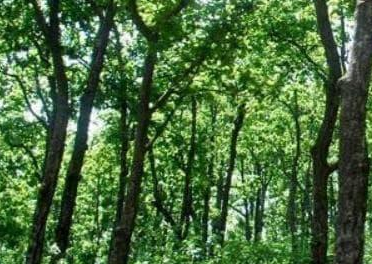Woodpeckers are historically found drawn to seed trees because they make good breeding and feeding sites for birds. Unfortunately, when seed trees are harvested from a forest, the chance of harming other trees, especially the smaller ones, increases. Harvesting seed trees also raises the risk of wind and insect damage. In addition to inflicting harm to trees, the harvesting of seedlings also necessitates competition management and thinning.
The method of reforestation known as seed tree reforestation involves leaving healthy, mature trees in the existing stand that produce a good cone crop (typically between 6 to15 per acre) to collect seed to regenerate a new stand of trees. When the number of seedlings is high enough to withstand some logging losses, the seed trees are normally removed after regeneration is established. It is not uncommon for forest management to leave seed trees to benefit wildlife or for aesthetic purposes.
Artificial seedling planting is often used to replenish regions where natural seeding is insufficient. The harvesting of seed trees helps replenish white pine, southern pines, and several oak species.
Seed Tree Harvesting Pros and Cons
The forestry sector has shifted away from the conventional "cut and walk away" approach to regeneration in recent decades. This is particularly true for privately owned, forested areas that are not used in any industrial capacity. If a desirable crop tree stand is not regenerated on these soils, all intermediate management options are relatively ineffective. Many landowners are unaware of the variety of regeneration alternatives available to them.

There are many reasons why people do not regenerate, and most of them are not good for the environment or the economy. One of the most prevalent explanations is the idea that trees regrow on their own without any management involvement. This is true, but without active regeneration efforts, there is little to no control over the species that occupy the site and no control over how long it takes for regeneration to take place.
The following are some of the advantages of this type of harvesting:
- The majority of tree planters are accustomed to planting tree seedlings that come bare-root, bagged, or potted. There is, however, one approach that is demonstrated to be effective, particularly in conservation plantings, riparian zones, wildlife plots, field borders, plants from the Conservation Reserve Program, and other places around the farm and in the field.
- By utilizing the advantages of both shrubland and natural forest regeneration, direct seeding trees provides a more realistic representation of a forest ecosystem.
- Surprisingly, a regular grain drill, which is more often used, or a grass seed drill designed specifically for native grasses is often used to plant seedlings of young trees and shrubs.
- Drills are easier to use and require less labor than tractor and transplanter planting.
- The majority of direct planting carried out today, and almost all direct seeding carried out in the past, is dependent on severe plowing, leaving a seedbed ideal for weed seed germination.
- The seed makes it easy to mix different kinds of trees and bushes in a planting area.
- Seed is less expensive and requires less time, work, and money to plant.
The harvesting of seed trees comes with some positive outcomes, but it also results in a few undesirable outcomes.
The majority of seedlings are not as hardy as the parent tree, which can increase the likelihood of pests and diseases as well as result in undesirable branch and stem shapes. Seedlings grown from low-quality seeds are often not as productive as those grown from better seeds, thereby lowering both the quality of timber and return on investment.
When seed trees are harvested, the trees in the surrounding area are at a greater risk of being attacked by insects and suffering harm. The expenses of logging rise if seedlings are harvested too early.
It is important to consider the advantages of seedlings in addition to the potential drawbacks. To guarantee the sustainability of seedlings, the harvesting procedure includes the selection of seedlings from trees that are resistant to specific circumstances. In addition to the apparent benefits, seedlings also serve as an essential food source for birds.








0 Comments
For comments please reply here.......